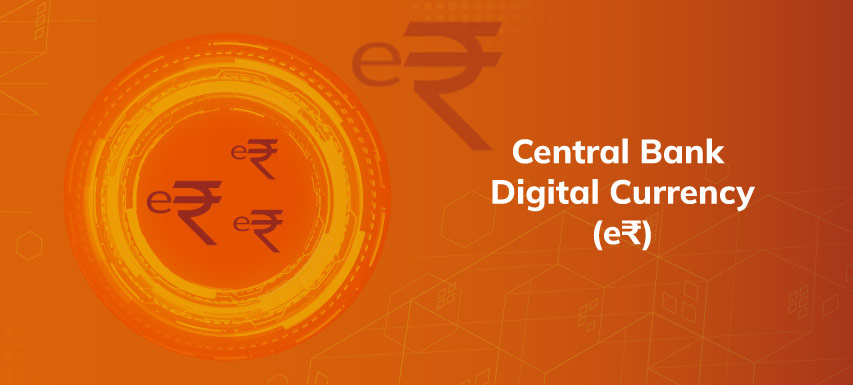THE
ORANGE
HUB
5 W’s of Digital Rupee; India’s CBDC

What?
CBDC (Central Bank Digital Currency)
Central Bank Digital Currency (CBDC) is the digital form of a country’s fiat currency. It is akin to sovereign paper currency but takes a digital form, thus, exchangeable one-to-one with the fiat currency. For example, in the United States of America a CBDC would be the digital form of the dollar. In layman’s terms, cash will now be of two types: paper/physical (banknotes, coins) & digital (CBDC). Just like the physical notes are printed & issued by the central bank and are a liability of the central bank, CBDCs are also digitally created & issued by them & are their liability.
Digital Rupee (e₹); India’s CBDC
The Reserve Bank of India (RBI) defines CBDC as a legal tender issued by a central bank in a digital form. Digital Rupee is the name given to India’s version of CBDC, which is in the form of a digital token that represents the Indian Rupee. As a legal tender, the Digital Rupee shall be accepted as a medium of payment and would have a safe store of value. It is being issued in the same denominations that paper currency and coins are currently issued. As in the case of cash, it will not earn any interest and can be converted to other forms of money like deposits with banks.
When?
RBI has launched the first pilot for retail Digital Rupee on 1st Dec 2022 to test the robustness of the entire process of digital rupee creation, distribution and retail usage in real time. Different features and applications of the e₹- R token and architecture will be tested in future pilots based on the learning from this pilot.
Where?
Explore seamless access to the digital rupee across India, from metropolitan cities to rural villages.
Why?
The world is rapidly changing and the way we transact with money is no exception. People and businesses across the globe have started dabbling in cryptocurrencies as an alternate medium to accept payments. Even though the usage is relatively very small, world’s central banks have realised that they need to provide an alternative or let the future of money pass by.
Advantages of the Digital Rupee
Being a sovereign currency, the Digital Rupee holds unique advantages of central bank money viz. trust, safety, liquidity, settlement finality and integrity.
Digital Rupee reduces the operational cost involved in printing and managing physical cash.
Instant Transactions: Digital Rupee transactions are processed instantly, reducing the waiting time for clearing and settlement.
Increased security with Distributed Ledger Technology: Digital Rupee transactions are secured using blockchain and advanced encryption Technology. They are immutable which reduces the risk of fraud and hacking.
Offline feature of CBDC (to be rolled out in future pilots) would be beneficial in remote locations and offer availability with resilience benefits when electrical power or mobile network is unavailable.
Low credit risk for customers, since just like physical cash, it is backed by the central bank
Boosting innovation in cross-border payments. CBDC will reduce the charges and time required to process the cross border transactions. It provides the similar utility that any private virtual currencies can provide without the associated risks.
Safety & stability of the financial system by countering the threat of cryptocurrency. Providing public with uses that any private digital currencies can provide without the associated risks.
Fostering financial inclusion due to the ability to transact without a bank account (To be rolled out in future pilots).
Who?
Digital Rupee caters to everyone, providing a safe and efficient digital payment option for individuals, businesses, and institution. Whether you're a consumer seeking convenient payment methods or a merchant aiming to accept digital transactions, Digital Rupee delivers a seamless and dependable solution.
Scroll to top











